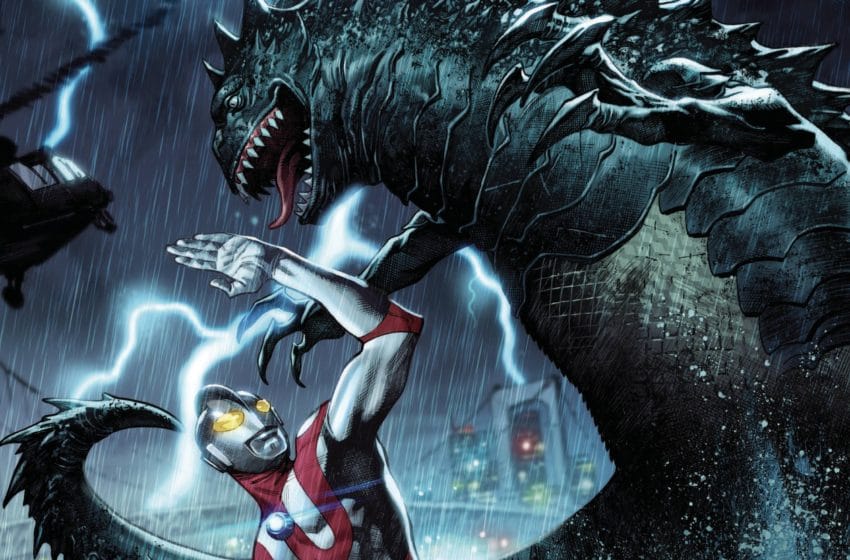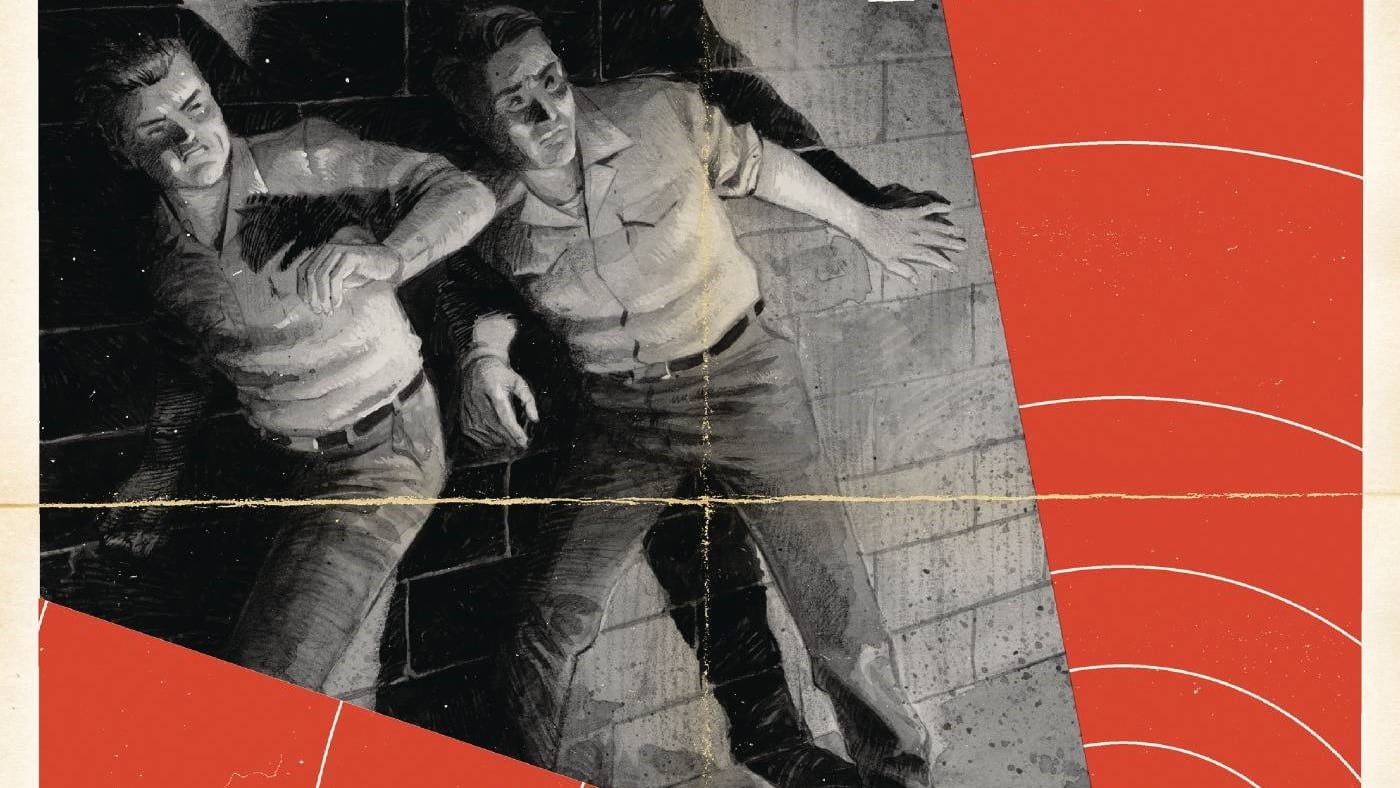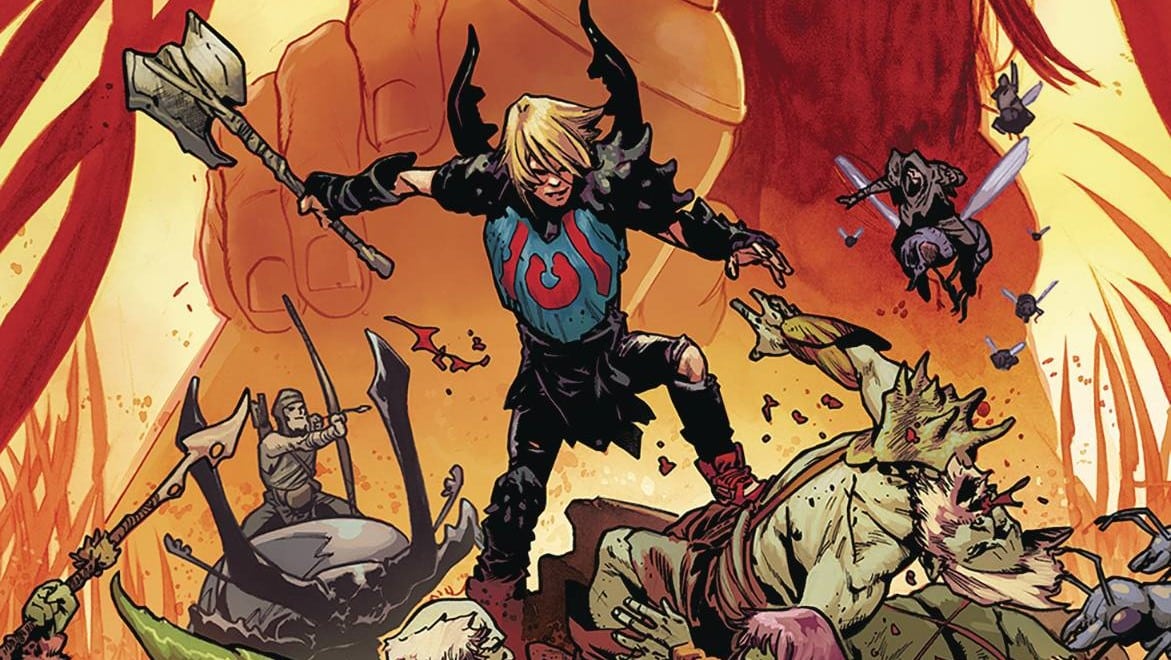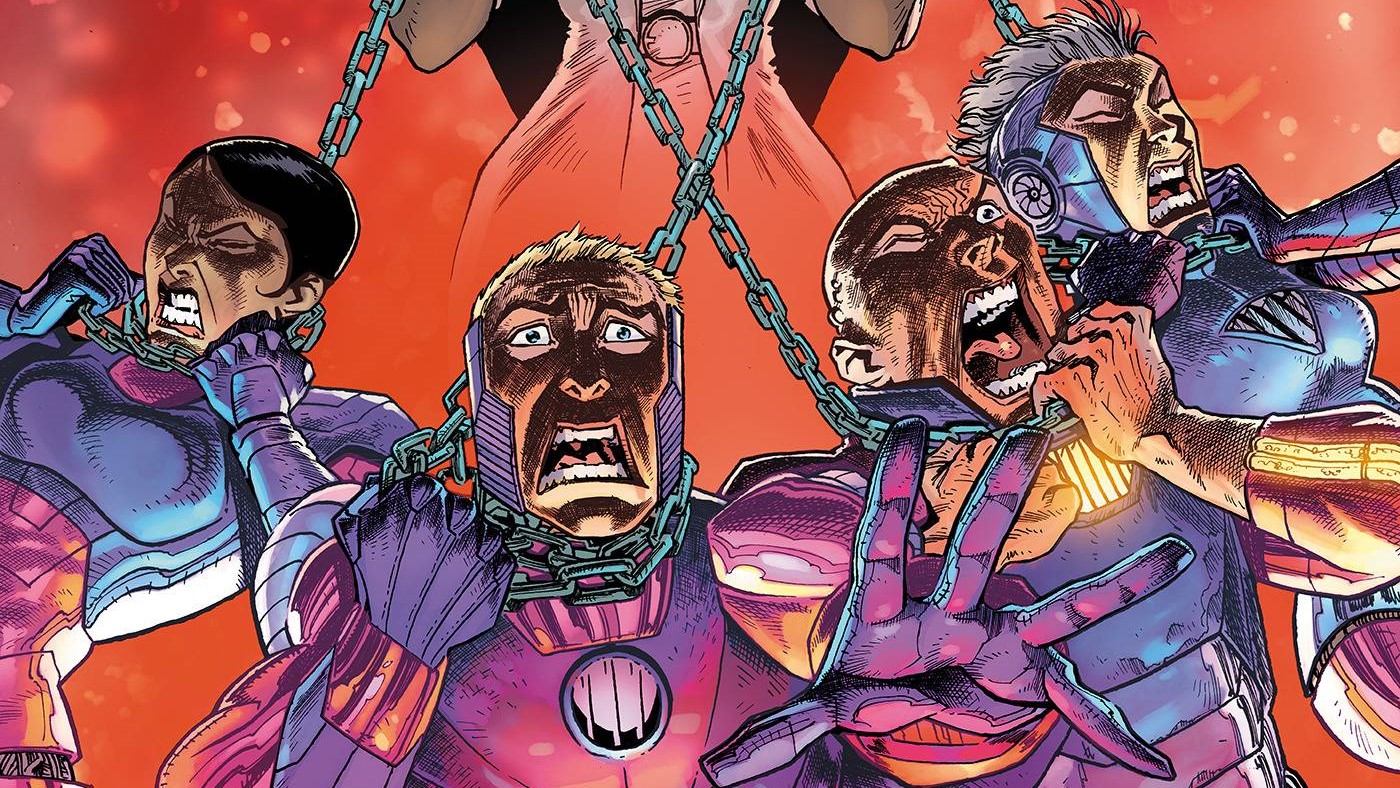Kaiju attack and the fate of Ultraman decided in Ultraman #5! by Kyle Higgins, Matt Groom, Francesco Manna, Espen Grundetjern, and VC’s Ariana Maher.
Ritesh Babu: Here we are, Ian. At last! The finale of the book!
Ian Gregory: This is really Francesco Manna’s time to shine, as he delivers thirteen incredible pages of Giant Ultraman fights Giant Monster, which is basically what we’ve been begging for since the start of this book. Was it worth the wait?
RB: I’m gonna say yes, in that Manna is incredible, but also I don’t know that they did need to wait this long? That said, the action is a blast.
IG: The pacing of the series has been our sticking point throughout, and I appreciate that delaying this fight means that it can take up so much space in this issue, but I don’t feel like it plays well in a monthly format. Now that you can gulp this whole thing down in one go? Pretty good!
Ultra-Action

RB: I love that spread by Manna and colorist [Espen] Grundetjern, wherein our Ultraman finally rises, quite literally, growing to his towering status. Ultraman is, afterall, only truly Ultraman when he’s BEEG. But even beyond that, given what the Ultra-concept represents, especially as framed here, it’s mankind merging with a higher idea, and ascending to be bigger than it is.
Ultraman can be anyone, and it’s why I do reckon, pacing aside, creatively the choice was understandable. Rather than just doing the standard ‘Ultraman is big and he fights monsters’, you build to that moment wherein it’s earned. A tiny man becomes something grander, something greater, carrying the burdens of his entire people on his shoulders. So thus even his fighting, which is great, has some semblance of meaning. The Ultra-Action has some weight and purpose beyond just being cool, which, make no mistake, it is!
IG: The size change works as a payoff for new and old readers alike: it’s either an exciting revelation that he can get so big, or the reveal of something you’ve been waiting for all five issues. I like that Ultraman is in constant conversation while he fights, as well. He’s learning to fight as part of a team, and it involves Kiki in a fight where she physically can’t make a difference, but can emotionally and intellectually.
Manna really captures what I consider to be key visual identifiers for Ultraman, as well. Bemular looks great – he’s got this goofy look that perfectly suits the series’ less intense monster designs. Ultraman is sleek, and he moves exactly like he should – like a pro wrestler, dodging and spinning and kicking with great agility. It means that this fight has a lot of energy to it, as Ultraman does his acrobatic moves and trades energy blasts with Bemular. A major problem of representing fights between giants is that their moves can seem slow and plodding; Manna really conserves the excitement and speed of his earlier, smaller-scale fights.
RB: I recall Peter Capaldi once saying that part of the charm of something like Doctor Who was its sort of B-movie quality, with all the dopey monsters in bizarre outfits, and all the artifice. And I think it applies to Tokusatsu as well, and thus particularly Ultraman. And so when I see Bemular in all his goofy glory, with his mouth all open, shaking about the page, screaming, I have to smile. And conserving the Kaiju-duel action until now means that there isn’t anything left to conserve here, for this final showdown on Manna’s part. He just gets to cut loose, and show Ultraman wrestle the heck out of Bemular in a way that is exciting and dynamic. There’s a lot of great energy and a kinetic power in the action, which I really appreciate. And part of that is also Ariana Maher’s letters, which, whenever the SFX kicks in, it just adds a lovely texture to bring the whole damn thing to life.
IG: Skipping ahead a bit to the last splash page, Manna’s really got something going with his particle effects, too. I love that you can make out the shape of the monsters as Ultraman crushes the Kaiju Vault, and the streaking effect applied to Bemular as he disintegrates. I also want to call out the motion blur on Ultraman’s foot as he capoeira-kicks Bemular. All in all, great stuff.
The USP Going Forward

IG: We’ve been wondering for a while what the new status quo will look like at the end of this series, and it’s essentially what we expected: Shin joins the USP, which is forced to reveal the existence of kaiju to the world. I do like their solution to the kaiju problem: destroying the vault, releasing them into various parts of the world, imprinting Ultraman’s image into their brain to make him their enemy, not all of mankind. It sets us up for a bit of a world tour: Ultraman and pals travelling the globe, tracking down rogue kaiju. What did you think of how this ends?
RB: I was actually quite surprised by how optimistic and idealistic this whole affair turned out to be. Like, clearly, Ultraman blames and points the finger on the USP. He repeatedly notes their failures and how things have failed, to bring us to this point. But he’s also very willing and open to work with them to build a better future.
The key moment is wherein Kiki also shoulders the blame for how things are, which is to illustrate that Kiki represents human potential. Both the potential to do the things that the USP has done, the human flaws, but also the ability to rise above them. It’s a loud, powerful expression of a belief and faith in people. That people can change. It’s why even Yamamoto is made to change his mind. The work does acknowledge the messes that summon up via the monsters that haunt us, made manifest in a cosmic timeless vault that might as well be the measure of human sin. But at the same time, it also believes we’re bigger than that, or at least we’re capable of it. We just need to confront those monsters, rather than seal them away, and hope they’re gone. We’re all Ultraman, in the moments we choose to confront our horrors rather than flee. When we wrestle with it, as Ultraman must, eternally.
So the whole thing ending on a changed USP, for a changed world? Yeah, that makes sense. It expresses the ethos it’s going for pretty succinctly.
IG: I did like that Kiki acknowledges why she got into the USP and Shin did not, but the one panel we got of Muramatsu sitting in a jail cell made me realize that he hasn’t been in the last two issues at all. I think his perspective on all this would be particularly valuable, as he’s a frontliner USP member, one with a lot more experience with the institution than Kiki. I think the ending was nicely optimistic, which fits with the source material, but it did feel a little out of place when compared to the dark and mysterious first issues of this mini. Everything ties off in a way that’s very neat, and while I appreciate the cleverness of the plot, I didn’t feel compelled by it. This book is well-written, for sure, but I’m not sure it did anything for me, in the way that watching an episode of Ultraman conjures up childlike wonder and optimism. I wonder if, along the way, the message became a little confused; it’s optimistic like the show, but dark and cynical as well, and the combination of the two makes it ultimately feel like nothing at all.
RB: I think that tangle, that struggle, is definitely there. Part of it, I do think, is the absolute artifice, and performative nature of Ultraman as a show. The whole thing has a very visible theatricality to it that is hard to replicate in a comic, to elicit that same set of assumptions, to sell what it is. This skews closer to a realism more common within western superhero fiction, so that is something it’s constantly trying to deal with.
But beyond that, I reckon part of it is that it’s very much an expected origin. It twists a bit here and there, but it is pretty much Ultraman 101. So if you know the enterprise, it feels too standard. The early origin/set-up tales for this sorta thing are always hewing closest to expectation, so I wonder what this whole thing looks like moving forward.
Ultimately though, I do think our experience was significantly impacted by the nature of its release. This is a monthly. But had this come out at once as an OGN or even a weekly, I think we might have a different response. I’m curious what the trade-reader’s experience with this one’s gonna be.
Looking Back

IG: Well, now that this mini is over, we can look back on it as a single experience. Like I said above, this definitely reads better as a single story, rather than five monthly ones. It also seems like the sequel, The Trials of Ultraman, will be in the same format as this one. I think, overall, this is a really solid introduction to the concepts and tropes of Ultraman as a franchise, and a healthy foundation to build upon for a while to come.
What I like about the approach Higgins and Groom took with this series is how easily it can spin out to be much more complex. They dangled a couple plot threads, set up a long-term conflict, and got all the major worldbuilding out of the way. Now, if they so choose, they can go crazier: multiple Ultras, more intelligent kaijus, the USP gets their own robot, and so on, without losing the new audience. I think that the hard work in getting everything set up in Rise should allow them to play with all the fun, deep lore elements of the Ultra universe. If the primary goal of this mini was to establish Ultraman as an identifiable character, who can have repeatable adventures, then it’s a major success: just give someone this mini, and they have all the groundwork they’ll need for later series.
RB: Absolutely. And there is that USM-esque Bendisy cliffhanger, too. It’s got that TO BE CONTINUED to keep you reading. This is very much the Act 1 of the seemingly larger Ultraman story being told by this team, and so it’s frustrating in that you’re getting pieces of pieces, but put together as a whole, I remain interested in what comes next and what the whole thing looks like when finished.







